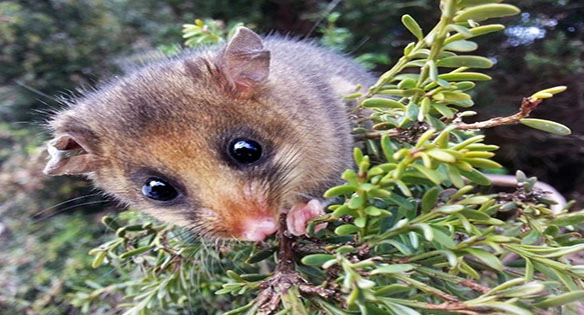Researchers felt that because the skulls of the 450 shaggy soft-haired mice (Abrothrix hirta) from the western side were so diverse in size, they most likely belonged to separate species. Instead, they discovered what was probably a brand-new biological law.
Carl Bergmann made the discovery that animals are bigger at higher latitudes than they are at the equator. Elephants and hippopotami that live in highly tropical climates come to mind. You’re not mistaken, but Bergmann was thinking of variations within a species, not among them. We are aware of the cause, and nearly two centuries of investigation have supported what is now known as Bergmann’s Rule. Smaller animals lose energy more quickly due to their greater surface area to mass ratio, which is advantageous in hot climates but problematic in cold ones.
Dr. Noé de la Sancha of the Field Museum and her co-authors believe they may have created a novel theory that applies rainfall instead of temperature, which they have published in the Journal of Biogeography.
According to de la Sancha, “There are a number of ecogeographic laws that scientists employ to explain tendencies that we witness in nature repeatedly.” With this paper, I believe we may have discovered a brand-new one: animal size and shape variations can be attributed to the rain shadow effect.
When winds regularly blow from one direction over mountains, scooping up a lot of water vapor from oceans or jungles, rain shadows result. The majority of the water that clouds are transporting is released as a result of being pushed up into colder air by mountain slopes. There isn’t much water vapor left after crossing the mountains. As a result, the mountains’ windward side may be quite wet while the opposite side is dry.
The impact on the people who live on the slopes is far less understood, despite the fact that this is such a common geographical characteristic that it is frequently taught in high school.
Dr. Pablo Teta, the first author, and director of the Museo Argentino de Ciencias Naturales didn’t set out to discover a general biogeographic theory; rather, he only wanted to check into some understudied mice. De la Sancha described them as “really adorable little buggers” with “soft white bellies.” They’re distinct since they reside in the mountains, but they can also be found at lower levels. They have not been extensively researched overall.
Teta observed an odd variation in the diameters of 450 mouse skulls, although mitochondrial DNA revealed that many species were not likely to be present. Although data were gathered over 19 degrees of latitude, Bergmann’s rule had no impact on size. The authors attempted to analyze a variety of additional factors from the sites where the skulls were taken; longitude was unquestionably the most significant.
De la Sancha remembered the Andes provided a particularly clear example and recognized the bigger mice were positioned on the wet side while instructing an ecology lesson that addressed the rain shadow effect. “On some mountains, the contrast is stark. One side may resemble a tropical rainforest, while the other may resemble a desert, according to de la Sancha.
Additional research supported his hunch that the “resource rule,” which states that members of a species grow larger where food and other resources are more plentiful, was in use. On the west side of the mountains, greater rain equals more plant life, which leads to larger mice. Even though it would seem simple when to put this way, no one has ever discovered a correlation between rain shadows and mammal size, according to de la Sancha.
The scientists will have made a curious discovery if it turns out that mice are the only species where rain shadows have this impact, but if future research reveals a pattern, this might one day be regarded as a law on par with Bergmann’s. There are a lot of lands that might be impacted because, as the article points out, “Mountains cover approximately 22% of the planet’s terrestrial surface.”
But these days, the shadow of climate change casts a strange light over all of the geographies. The charming mice may suffer because of changing rain patterns, but nobody knows what the future holds for them. In addition, there is also the perennial alpine threat of being pushed higher up slopes. You eventually run out of mountains, according to de la Sancha.
Although the Andes are high enough to offer the mice some space, we won’t know if they are yet another imperiled species without further research.















